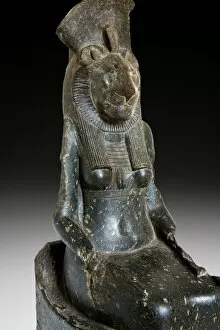Leonine Collection
From the fierce goddess Sekhmet, embodiment of power and destruction, to the cuddly Sagoin, a small lion monkey, the leonine theme spans various cultures and eras
All Professionally Made to Order for Quick Shipping
From the fierce goddess Sekhmet, embodiment of power and destruction, to the cuddly Sagoin, a small lion monkey, the leonine theme spans various cultures and eras. Page 79 unveils the Great Ursine Sloth's leonine features, while the crouching lion on Page 1810-17 stands as a symbol of strength. The pygmy marmoset, with its leonine canines, adds to the diversity creatures. EyeUbiquitous_20102764 captures a leonine goddess, Mehit, in relief, as does Persian-Achaemenid art with its gold rhyton. Mehit's triumphant form is echoed in the Allegory of the Active and Triumphant Church, where leonine imagery symbolizes the power and victory of the faith. Through these depictions, the leonine spirit transcends time and culture.










